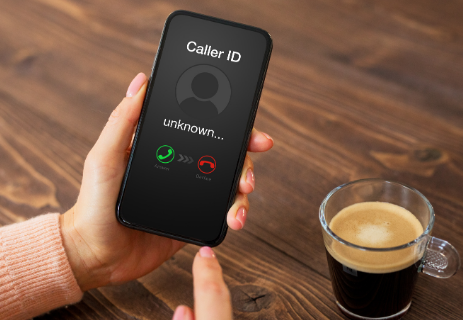Robocalls
Spam or robocalls as they are often known are automated telephone calls that deliver a recorded message are on the rise. The FCC states that they receive over 200,000 complaints a year specific to unwanted phone calls and that approximately 2.4 billion robocalls are made each month. These calls are not only a nuisance, but criminals are using them to scam unsuspecting people. According to the FTC around $300 million dollars is lost each year due to phone scams.
The most common robocalls people receive are fake calls from the IRS, tech support calls, debt collection, extended warranties, and medical insurance coverage. Many of these calls request immediate action or a strict penalty will be enforced. These calls are meant to scare listeners into acting urgently. Some promise low cost health insurance or warranties on cars that are more than 10 years old.
How can you protect yourself from these harmful calls?
Do not answer calls from phone numbers that you do not recognize. If you answer the call, your number will be considered a live number and will be called again or sold to others so they can call you as well. If you do answer a call by mistake, hang up. Don’t listen to the prompt and press the number to be placed on a do not call list. This list doesn’t exist, instead you could be placing your number on a “live” number list.
Additionally, you can register your number on the Do Not Call Registry. Unfortunately, the registry isn’t as effective as it once was. Despite the issues with the registry, it is still an important way to stop robocalls. The process only takes a moment and at the very least, you are registering your concern for this issue with the government.
Request the Federal Communications Commission (FCC) take a tougher stance on companies and individuals that produce robocalls and work on making simple ways to opt out of receiving automated calls. The FCC is set up to regulate interstate communication and can create stronger regulation to limit the number of unwanted calls people receive.
Next, talk to your phone provider about the options available to you to limit nuisance calls. Ask them for help and enable any features they offer to reduce the number of SPAM calls you receive. T-Mobile has a built in Scam ID and Scam Block. AT&T Call Protect is a free app provided by AT&T for their customers and Verizon’s Call Filter is a free and available for their customers. If your phone provider doesn’t provide services to help reduce the number of robocalls you receive, consider downloading a 3rd party app that will help reduce the number of robocalls you receive.
Lastly, you can download a smartphone app to help block and filter unwanted calls. There are dozens of apps available that will help limit the number of calls you receive. Take time to read some reviews about these apps and their terms and conditions to find one that fits your need. The two most popular apps in this service area are Nomorobo and Hiya. Some apps even take the innovative step of answering the robocall for you with a dial tone to indicate that your number is not in service. All of these apps, no matter if they are from your service provider or an app you choose from your App store, will check the calls you receive against a database of several million numbers. It will check to see if the numbers are being used for robocalls and prevent the call from reaching you.
For more information or help getting started using your smartphone or tablet, visit your local library and sign up for one of the many technology classes offered throughout the county. A class about reducing robocalls will take place at the Central Ridge Library on July 31, registration is required.


















